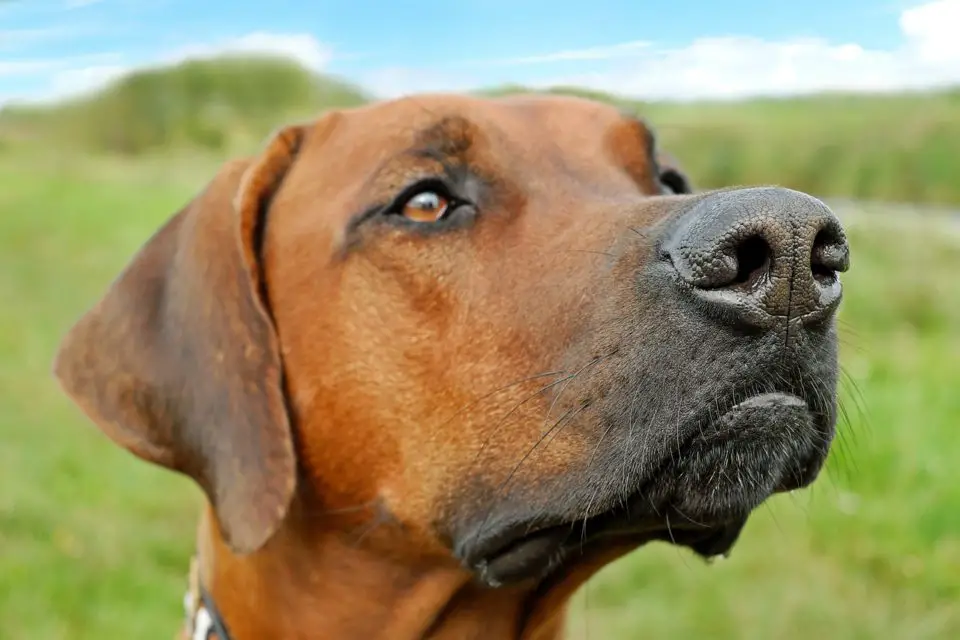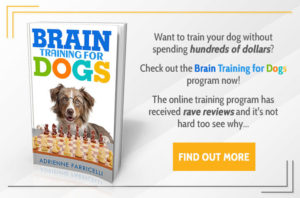Hello, my name is Valerie and my furry friend is called Bentley.
Now, I am very lucky because Bentley does not have a weight problem. The other day we met a man walking his enormous dog.
Not only was the dog large in breed, but he was also very overweight – even Bentley and I could see that.
So, on the way home I got to thinking about keeping large breed dogs in good shape.
After having been on a few diets in my life I have learned that there is a very simple game plan with weight loss.
If you eat more than your body needs, you will put on weight, if you eat less than it needs you will lose weight, and if you eat exactly what it needs, your weight will stay the same.
On doing some research, I found that this is true for animals as well as humans.
If we eat more than we need, we will put on weight, and so will our dogs. This is where portion control comes into the picture.
Unfortunately, most dog owners love their pets and nothing is better than feeding them treats. And that is where the problems begin.
Is Homemade Food Okay For Weight Loss?
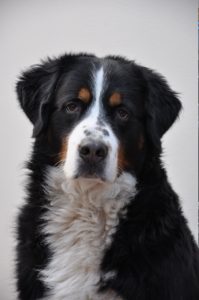 There are two ways of looking at this. The first is that you know exactly what goes into the food, you know there are no additives or preservatives, and nothing that will harm your pooch.
There are two ways of looking at this. The first is that you know exactly what goes into the food, you know there are no additives or preservatives, and nothing that will harm your pooch.
You also know that there are no hidden fats and sugars because you know what ingredients you have used in that meal.
On the other hand, you may have a significantly harder time working out the calorie count in a meal you’ve cooked, rather than one that is bought.
Studies have also unfortunately shown that homemade dog food contains fewer essential nutrients than bought foods. This could result in several health problems for your dog.
The bottom line with weight loss meals for large breed dogs is that you need to learn how to read labels, understand them and commit yourself to sticking to a calorie counting meal time.
How do we Get our Dog to Lose Weight?
It is best to first speak to your vet and let him know that you are going to put your pooch on a diet. They should recommend a good weight loss food and they can help you set up a diet plan.
-
Feed According to The Label Recommendations
It is important that you stick to these, they have been worked out to supply your dog with essential vitamins and minerals while still restricting calories.
Don’t try to second guess them or you may find your dog gains weight instead!
If you switch dog foods then be sure to read the labels on the new food.
All dog foods differ slightly so you may find that you feed him 2 scoops of one type and 2 ½ of another. Make sure you check the amounts.
-
Measure Correctly
Ideally you should invest in a kitchen scale so that you can accurately measure the amount every time.
Another way to do this is to use a 250ml cup to measure out food. Make sure you use the same cup every time because cups sizes differ, and you may find that one holds 250ml while another holds 300ml.
Small difference to a human but a great amount of extra food to a dog on a diet.
-
Stop Human Food And Snacks
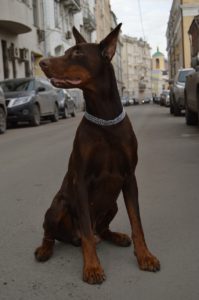
It is very easy to spoil your dog – we are all guilty of this! But exactly as with humans when we are on a diet, what ruins the diet are the snacks and treats, the hidden calories.
Make sure that the whole family is on board with your dog’s diet otherwise you will find that he does not lose weight because someone is sneaking him treats.
If you do want to give him treats then hold back some of his dry food, he will eat this as readily as he gobbles down that piece of cheese or other snack.
There’s a wrong way to feed a dog
Free choice meals are not a good idea when your dog is on a diet. They are not a good choice even if he is not on a diet.
Dogs will eat when they are bored instead of when they are hungry.
So, don’t be tempted to leave a bowl of food down because he will wolf it all down, you’ll feel sorry for your ‘poor baby’ and give him more in case he is hungry – and he will put on weight.
No matter how tempting it is to leave your dog’s food out for him to eat, it is better to give him 20 minutes of eating time and then remove his bowl.
And a Right Way to Feed Him
Your dog on a diet should have between two and four small portions each day.
The total calorie intake each day must not be more than the calories needed to lose weight.
This may be a problem if you work, but you can always invest in an automatic feeder which will dispense the right amount at a certain time.
Why is Being Overweight Bad For Our Pooch?
It is a sad fact that over 45% of all dogs in the USA are overweight or obese.
This is a startling figure when you say that in America alone there are 35 million dogs who need to loose weight seriously!
Obesity is often life threatening with dogs. They are more likely to suffer from bad health and disabling conditions.
A great way to keep your dog physically and mentally stimulated is to train them.
We have created a great article which reviews Brain Training 4 Dogs an amazing programme that can teach your dog amazing tricks
If you would like to see our review of this click here!
Some Things Which Are a Direct Result of Obesity Are:
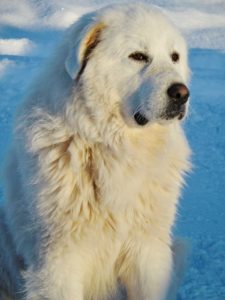
Heart disease
Diabetes
Immune deficiency
Cancers and tumours
High blood pressure
Lung disorders
Additionally, being overweight will place more strain on your pooch’s joints as well as on his back.
Those poor knees are not designed to carry excess pounds and sooner or later your dog will start to be in pain.
The Solution
In theory the solution to any weight loss programme is very simple – we simply need to eat less and exercise more.
This is also true for a dog who is over weight. To see any weight loss calories, need to reduced and more energy expended.
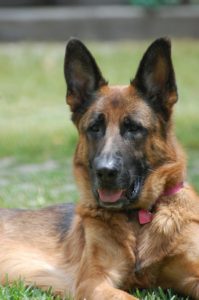
Of course, as with us humans, in practise losing weight can be very challenging. It is the same with your dog. However, if you work together you can achieve a good weigh for your dog.
Exercise is the first thing to add or increase in the diet regime. We all know that not only do we feel better after exercise, but it’s good for us to keep moving, and it will help lose weight. T
his is the same for our dogs. The best thing you can do for your furry friend is to get him moving.
Talk a walk, increase it a little every day, play fetch with him, take him swimming, use the stairs. Literally anything you can do to move your dog a little more will help with weight loss.
Start any exercise slowly and then increase. Walk a little further each day, who knows – you may even start jogging with your pooch and keep your own weight under control.
When to Talk to The Vet
Before you start any weight management programme with your pooch, you should pay a visit to your vet.
Discuss your plan with him or her, get their professional advice on how much weight your pooch needs to lose, and which is the best way to approach it.
Your vet will also more than likely recommend a good food which is lower in calories while still being nutritious.
Your vet will also be able to tell you if there are any health problems with your furry friend which are preventing him losing weight naturally.
If you are sure that you feed your dog the right amount and exercise him with no results then you may want to have him checked out, if for no other reason than to set your mind at rest that he is well.
Monitoring Weight Loss
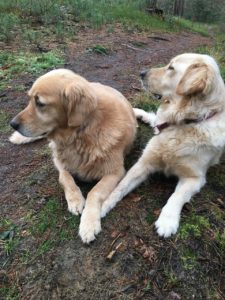 You should keep a notebook of your dog’s progress. Not only will you forget how much he weighed last week but it is also handy if you need to show the progress to your vet.
You should keep a notebook of your dog’s progress. Not only will you forget how much he weighed last week but it is also handy if you need to show the progress to your vet.
So write down his weight every time you weigh him. You should weigh your pooch every week.
Using the guidelines which your vet has outlined for you, you are aiming to see a loss of 1% to 2% of body weight each week. If this is not happening, you may reduce the calorie intake a little further
You should also be sure that your dog is not secretly snacking elsewhere, like having treats from the kids or friendly neighbour who keeps treats in her pocket specially for your pooch.
Yes, some neighbours do this, we have one who loves to feed Bentley treats, particularly when he sits and offers her a paw! So keep an eye for ‘hidden calories’.
If you have done all this and still see no loss, then it may be time to go back to your vet and discuss this with him.
So, I’ve had a look at some weight management foods for large breeds and have come up with this selection.
The Best Weight Management Dog Food for Large Breeds!
1. Hill’s Science Diet Large Breed Dry Dog Food
This food is specifically made for large breeds as well as giant breeds.
It is perfect for dogs that weigh more than 55 pounds at one year of age.
This food has 18% less calories per portion than regular large dog food of the same brand.
It also contains natural sources of Glucosamine and Chondroitin, as well as all the essential nutrients your big breed dog will need.
2. Royal Canin Adult Dry Dog Food
This food is made of high-quality protein and is perfectly balanced, also a good source of fiber.
It supports the immune system and also supports healthy bones and joints which are very important in large breeds. There are Omega-3 fatty acids for healthy skin.
What will strike you as soon as you open the bag is that the food smells delicious!
3. Nutro Wholesome Essentials Adult Dry Dog Food
The pieces are slightly smaller than you would expect but this means that they are suitable for older large dogs as well as adults as they are easy to chew.
The mixture is full of anti-oxidants and vitamins for a healthy immune system.
The food is made from non-GMO ingredients and smells great.
4. Hill’s Science Diet Adult Sensitive Stomach & Skin Dog Food
We often don’t think that large breeds can have sensitive stomachs and skin, but they can suffer from this just the same as smaller breeds, so this food is specifically designed for those dogs.
The food is made of high-quality ingredients which are easy to digest.
It contains Omega-6 fatty acids and a full range of nutrients essential for your big breed dog.
5. Royal Canin German Shepherd Adult Dry Dog Food
This is designed for German Shepherds who fall into the large breed dog category.
This food supports the energy which these dogs need, as well as being full of vital nutrients. They are shaped so that they are easy to pick up and chew.
The food contains high-quality protein and natural flavours, as well as essential fatty oils to support skin and keep the coat shiny.
6. Hill’s Science Diet Adult Large Breed Dog Food
This food is designed for dogs that weigh more than 55 pounds so is perfect for large breed dogs. It contains natural sources of Glucosamine and Chondroitin for joints and mobility.
The protein is high-quality, and you will also find Omega-6 in the ingredient list.
Vitamins and minerals ensure your dog has a healthy skin and coat. There are anti-oxidants with Vitamin C and E to support the immune system.
7. NUTRO Limited Ingredient Diet Adult Dry Dog Food
What is interesting about this dog food is that it contains 10 ingredients or less, with the protein source coming from venison.
The food contains natural flavours, vitamins and minerals to support the immune system. Ingredients which have been avoided are corn, wheat and soy which often cause upsets stomachs in dogs with food sensitivities.
There are no GMO ingredients in this food.
8. Blue Buffalo Wilderness High Protein Grain Free, Natural Adult Healthy Weight Dry Dog Food
This is a high-protein healthy weight dog food. You will notice that the first ingredient is real meat. The food also contains L-Carnitine for lean and healthy muscles.
There are veggies as well as fruits in this meal.
The food is made without any additives and is designed to keep your dog at an ideal weight, if you stick by the recommendations.
The food is also grain free and enhanced with minerals and vitamins. It contains no by-products, corn, wheat or soy.
9. Blue Buffalo Basics Limited Ingredient Diet, Grain Free Natural Adult Dry Dog Food, Salmon & Potato
This is a fish dog food which is made from de-boned salmon.
The food contains carbs which are easy to digest. Essential carbs and protein are all high-quality and there is also Omega 3 and 6 for healthy skin and coat.
The food is grain-free and full of anti-oxidants, vitamins, and minerals and does not contain soy, wheat, dairy or eggs. Neither will you find any artificial colours or flavours.
Best Weight Management Dog Food for Large Breeds – Final Thoughts
Well, I hope you have learned as much as I did about weight loss foods for dogs.
If you have to put your dog on a diet, first consult your vet to make sure there is no medical reason for your dog gaining weight.
Then work out a diet and keep notes of your weigh-in sessions. Above all, get your dog moving! You’ll both benefit from a nice long walk and your dog will lose weight regularly.
